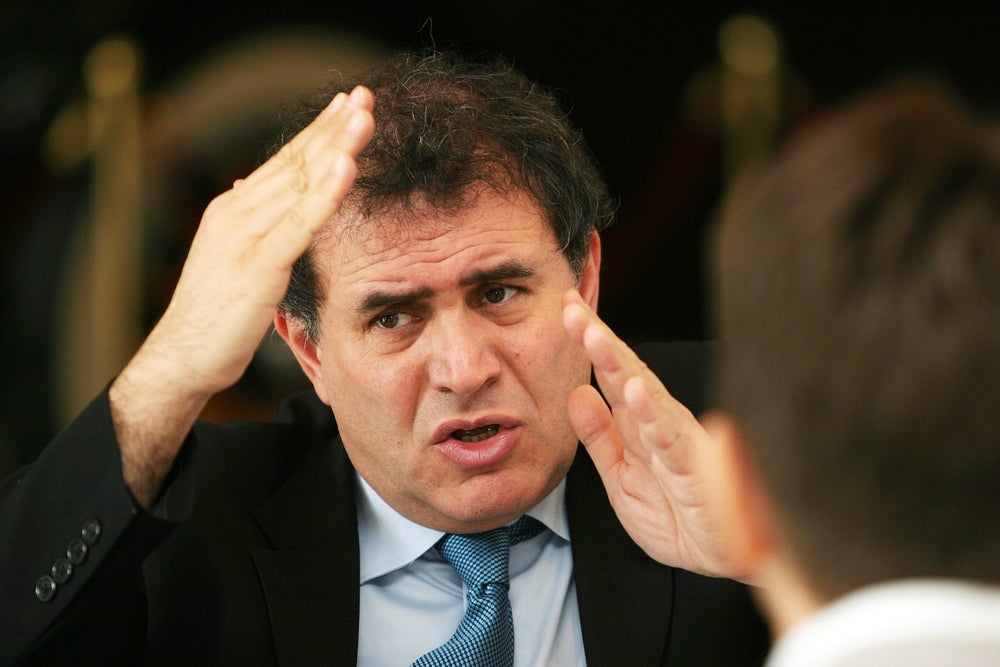Prominent economist Nouriel Roubini, known as “Dr. Doom” for his precise prediction of the 2008 financial crisis, has sounded an alarm again about how inflation hurts both stocks and bonds, and people should rethink the classic “60-40” investment strategy.
What Happened: Roubini reacted to a Wall Street Journal article about the 60/40 rule — in which one invests in a mixture of stocks and bonds — falling apart, saying he had written about it earlier this year on Project Syndicate.
“Now it is conventional wisdom,” he tweeted.
Traditional investment advice urges people to allocate wealth using the 60/40 rule: 60% of one’s portfolio in higher-return but more volatile stocks, and 40% in lower-return, lower-volatility bonds.
Roubini pointed out that the long-standing negative correlation between stock and bond prices is an artifact of the low-inflation environment of the past 30 years.
“If inflation and inflation expectations continue to rise, investors will have to rethink their portfolio strategies to hedge against the risk of massive future losses,” he had written in the article.
According to the economist, the correlation between stock and bond prices turns positive as inflation rises. Higher inflation leads to losses on both stocks and bonds, as it happened in the 1970s, Roubini said.
Also Read: Brokers For Short Selling
Roubini pointed out that more recent examples show equities taking a hit when bond yields rise in response to higher inflation or the expectation that higher inflation will lead to monetary-policy tightening.
He talked about market movements in September 2021, which saw stocks fall by 5-7% when 10-year Treasury yields rose a mere 22 basis points. “This pattern has extended into 2022. A modest 30-basis-point increase in bond yields has triggered a correction (when total market capitalization falls by at least 10%) in the Nasdaq and a near-correction in the S&P 500,” his January article reads.
The Invesco NASDAQ 100 ETF QQQM is down over 28% since the beginning of the year, while SPDR S&P 500 ETF Trust SPY shed over 16%.
“If inflation continues to be higher than it was over the past few decades … a 60/40 portfolio would induce massive losses. The task for investors, then, is to figure out another way to hedge the 40% of their portfolio that is in bonds,” he had said.
Hedging Options: Roubini gave three options to hedge the fixed income component of the 60/40 portfolio.
“The first is to invest in inflation-indexed bonds or in short-term government bonds whose yields reprice rapidly in response to higher inflation. The second option is to invest in gold and other precious metals,” he wrote. One can invest in real assets with a relatively limited supply, such as land, real estate, and infrastructure, he wrote.
“While the right portfolio mix can be debated, this much is clear: sovereign wealth funds, pension funds, endowments, foundations, family offices, and individuals following the 60/40 rule should start to think about diversifying their holdings to hedge against rising inflation,” Roubini had said.
Read Next: Tesla, Apple, Amazon, Nio, AMD: China Car Crash, MR Updates And Earnings Draw Investors’ Attention
Image and article originally from www.benzinga.com. Read the original article here.

